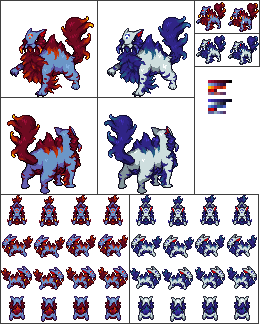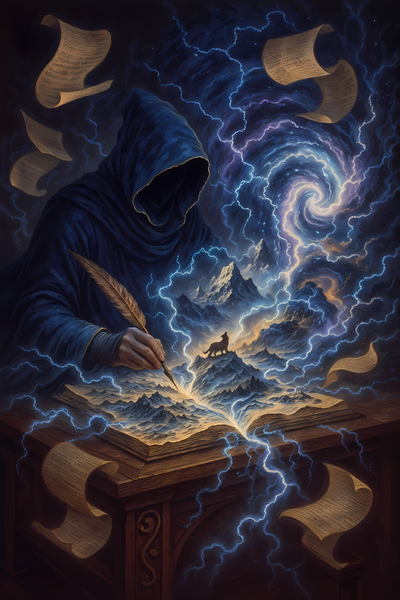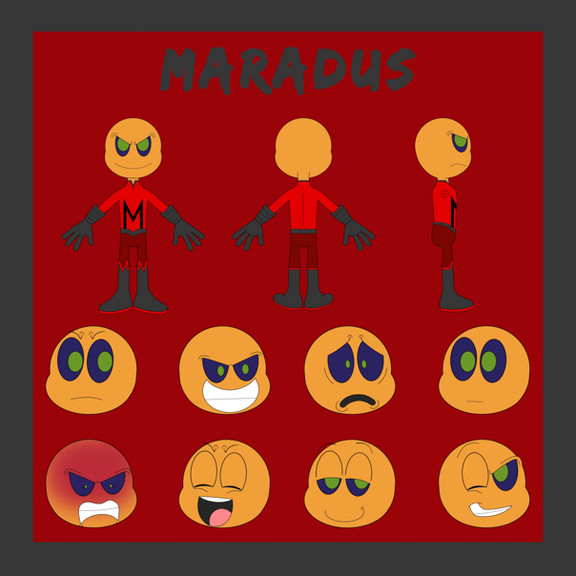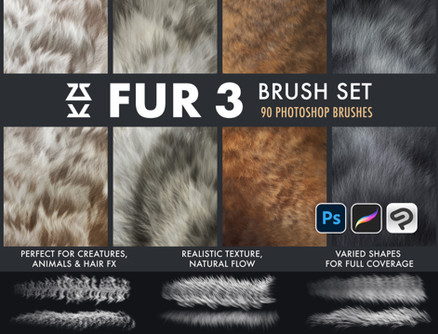HOME | DD
 9-Silver-Shadow-2 — Kebrian Reference Book
9-Silver-Shadow-2 — Kebrian Reference Book

Published: 2011-06-20 17:48:30 +0000 UTC; Views: 2367; Favourites: 32; Downloads: 62
Redirect to original
Description
I finally decided to make a reference book for my characters called "Kébrians". I wanted to set it out like an old box containing information, notes and specimens of these creatures




If you're having trouble reading it, you can always press download (Warning massive file!) but if you're Internet is really slow, I've wrote it down here for you.
Main Book:
• What is a Kébrian?:
Kébrians are giant four-legged avians found only in the Cainian Islands. They each have distinctive black stripes down their backs and are unique to each individual. They live for about 60 years and are great opportunists. Kébrians have horse-like faces and ears with wide nostrils on the ends of their muzzles. All kébrians have black stripes along the back of their torsos and rumps with a black crescent under both of their eyes. The eyes are all red with a large black pupil. Their legs are all black, ending with two sharply clawed toes and are covered in rough scales. The colour of a kébrians plumage coat may vary, ranging from pure white to a dirty brown. The majority of fully grown kébrians are over 5 meters in height at the shoulder (16ft 5”), 11 meters in length from nose to tail and weigh about 5230kg.
They each have a pair of beautiful feathered wings each measuring over 10 meters in length. The wings are all white/brown with the exception of black arms. Their tails are long, stiff and not prehensile. The tail has a line of long feathers running down both sides which fan out in order to act as a rudder to aid flight. These feathers can reach a maximum of 4metres long.
The two front legs each display a lethal-looking 2ft re-tractable claw, similar to that of a Utah raptor. This claw is used for slashing at the prey’s windpipe to puncture and cause suffocation. The back legs are double toed but no re-tractable claw, instead, they each have an ankle claw which is used to help the other toes snatch and hold slippery fish from the water.
A long mane and forelock made from extremely thin long feathers grows out from the top of the head and runs down the back of the neck, stopping at the shoulders. Four large canine teeth are prominent in their mouths with smaller sharp needle-like teeth.
• What does a Kébrian eat?:
Kébrians feed primarily on fish mostly from the ocean or from fresh water rivers but they will also hunt or scavenge for meat like a washed up carcass lying on a beach.
Wing: Large, broad, strong wings reach over 10metres each. Enables long-distance flying and the ability to carry objects 3 times its own body weight.
Eye: A kébrian’s eye is always red with a black pupil. Some kébrians will feature a black flick at the corners of their eyes.
• How do they Communicate?:
In order to communicate with each other, kébrians will make snorts, squawks and high screeches. They will also use forms of body language. A good way of displaying this is through their ears. When calm, ears are normal and stand up facing forwards, frightened or shocked, the ears will lean far forward and when angry or irritated they are pulled backward and teeth are bared.
• What is their Behaviour?:
Very social animals, they will live in groups of up to 20 individuals. They are mainly calm and enjoy interaction with each other and strengthen bonds by grooming and preening each others feathers. Even though they are mostly docile, they can be wild and aggressive against an intruder e.g. a rival group of kébrian. When kébrians want to find a mate, they will carefully select each other and then start to dance elegantly, mimicking each others moves perfectly. Once the couple complete their dance, they stay together for life.
• Birds of a Feather:
Kébrians are considered to be members of the bird family as they:
• are warm-blooded,
• covered in feathers,
• are able to fly,
• have scaled legs,
• have binocular vision,
• lay eggs,
• Similar appearance to dinosaurs
• have hooked talons,
A few things that separates them from the bird family is that they have teeth, 4 legs, protruding ears and no beak.
• Growing Up:
Kébrian young hatch from large pale brown speckled eggs inside a nest mainly on a high rocky outcrop. Nests are mostly made from branches and bones from prey. The average amount of eggs a female lays is 1 and 1 is laid every 3 years. The young kébrian is featherless and blind when it first hatches but then gains its vision after about 3 hours. After 6 weeks their feathers begin to grow all over the body. At about 18 months old, the muscles in their wings then begin to develop and take about 7 months to be fully feathered. Young kébrians learn to walk after 1 day through constant practice and with the encouragement of their parents. The young are relatively safe from predators as the cliffs are so steep and inaccessible. The biggest risk a baby has is falling from the nest into the sea. A falling baby is commonly rescued by the watchful eyes of its parents or another member of their kébrian flock. They begin to learn how to fly after 1 year.
• Habitat:
Kébrians live on the steep rocky cliffs and outcrops of the Cainian islands. Their main roosting areas are the cliff edges of Lateridgenal Island* at altitudes of 700ft above sea level. These cliffs are ideal for raising chicks as they are safe from predators like big cats such as panthers and dreaded death zebras**.
Scientific Classification:
Kingdom: Animalia
Phylum: Chordata
Class: Aves
Order: Accipitriformes
Latin Name: Niveus Volatilis Titan (White Winged Titan)
General Info Book:
Species: Kébrian
Height (at shoulder): 6ft 2” Weight: 500Ibs
Length: 11ft 5”
Claw Length: 2ft 4“ Wingspan: 64ft 7”
Strengths:
Two large retractable claws
Strong, broad wings enable long-distance flying
Amazing eyesight; spot prey from 150ft high
Sharp hooked claws for gripping fish
Long legs for wading
Long feathery tail acts like a rudder
Like to keep clean by grooming and preening
Weaknesses:
Hollow bones can break easily
Feathers aren’t waterproof Not good swimmers
Replacement teeth take a while to grow
Can suffer a type of depression if life-long mate is lost
Notepad:
Senses:
Vision: Excellent
Smell: Average
Hearing: Excellent
Taste: Good
Touch: Good
Bite Force: 755kg PSI
Other Information:
Stamina: Average Strength: Excellent
Running Speed: 65mph Flying Speed: 100mph
__________________________________________________________________________________________________
• Unfeatured Info:
Were the name “kébrian” is derived from in unknown. There are two types of kébrian which are: Mountain kébrian and glacier kébrian. The way Mountain kébrians differ from glacier kébrians is that they having darker stripes, can have brown plumage and live in the warmer climates of lower altitudes. Glacier kébrians, however, live at the top of the snow-capped mountains and their plumage is always pure white. Their feathers are denser and they have more feathers on the legs. A layer of fat underneath the skin keeps the glacier kébrians warm from the cold icy mountain tops. They also have stronger hearts and lungs which help them deal with such thin air. What glacier kébrians survive on in currently unknown.
*Lateridgenal Island and the Cainian Islands are fantasy islands I made up
** Death Zebra’s are other characters of mine. Their ref sheet is not yet up (I'm working on it)
I do admit, not all of the paper textures are mine as I had ran out of decent paper textures in my house





Any questions you have I'll be happy to answer them





Related content
Comments: 13

This is very well done. 
👍: 0 ⏩: 0

Oh, wow, so much detail! You must have put a LOT of work into this, and you put so much thought into the creature! Beautiful setup. What a great way to tell about something you created! They're almost like zebra-pegasus creatures, aren't they? Kudos for giving them hollow bones, so the flight makes sense. Actually, it's all very believable. Not only did you put thought into it, you knew what you were talking about. This is pretty danged awesome.
👍: 0 ⏩: 0

Nope, I was inspired by cranes, zebras and magpies :3
I had no idea what a peryton was until I Googled it 2 minutes ago xD
[x[x[x
👍: 0 ⏩: 0

So, are they horse shaped? I just want to make sure. 
👍: 0 ⏩: 1

Yes, they are horse-shaped :3 I should've drawn a more clear illustration X3
And yes, you're very welcome to create your own if you like
[x[x[x
👍: 0 ⏩: 1

Nonono, it's fine! I was just making sure. XD And awesome! I'll get started on mine asap. I'll be sure to link you when I'm done!
👍: 0 ⏩: 1

Ahaha :') Okie-Dokie ^^
[x[x[x
👍: 0 ⏩: 0

WOW! amazingly detailed and original, love it ^_^ (faving)
👍: 0 ⏩: 1

Thank You
[x[x[x
👍: 0 ⏩: 1

You're Welcome! 
👍: 0 ⏩: 0

F*ck me how long did this take you! I acctually managed to sit down and read the whole thing, are you proud of me! 
👍: 0 ⏩: 1

Ahaha! Thank you :3 It took about a week altogether :3
And yes, I am extremely proud of you girl!
[x[x[x
👍: 0 ⏩: 0



























